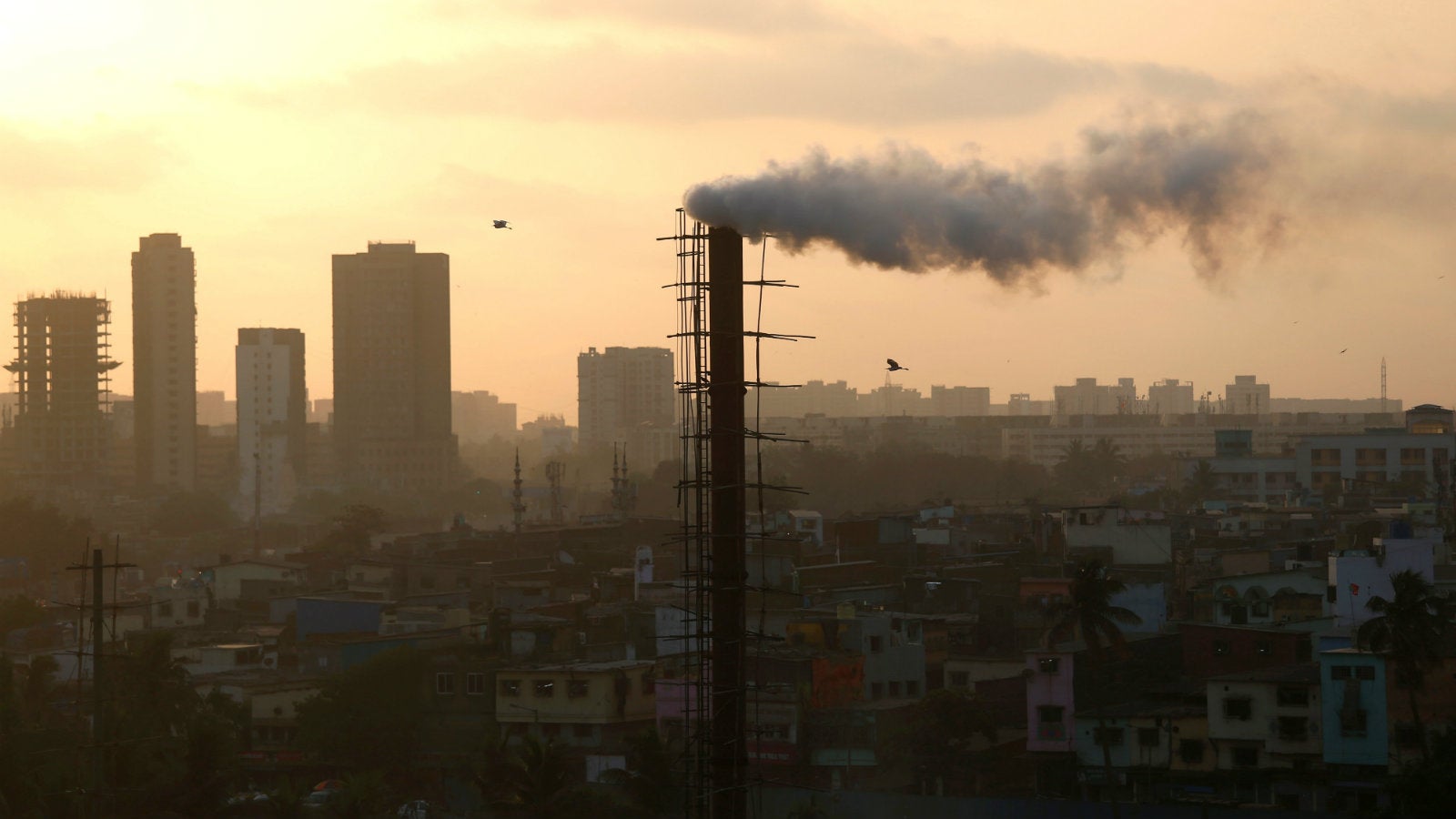Developed nations are “outsourcing” emissions to India
Exporting goods to developed nations is partly to blame for rising emissions in developing countries like India.


Exporting goods to developed nations is partly to blame for rising emissions in developing countries like India.
In 2015, nearly 20% of India’s emissions were linked to production of goods for exports, primarily to the US, according to a recent report by economic consultancy KGM & Associates and Global Efficiency Intelligence, an energy and environmental research firm.
The report looked at the global trade of “embodied emissions,” the total amount of emissions from all the processes required to deliver a product or service, using supply-chain data for 15,000 sectors in 189 countries.
Emissions for imported goods are not taken into account when consumer countries report their total emissions. “If they were,” the authors write, “many promising climate trends would be negated or reversed. For example, many achievements of reducing emissions by developed countries under the Kyoto Protocol would actually appear as emissions outsourced to developing countries.”
“On average, one-quarter of the global carbon footprint is embodied in imported goods. These hidden flows evade most types of carbon policy,” they add.
The US is the largest global importer of embodied emissions, while China is by far the largest exporter. India also ranks among the top five exporters.
The top five importers of embodied CO2:
The top five exporters of embodied CO2:
Crisis conditions
Many of India’s cities rank among the world’s most polluted, and air pollution is already estimated to cost Indians about 1.5 years of their lives.
While the government has gradually promoted investments in renewable energy and electric vehicles to address emissions from fuel combustion, which form the bulk of India’s total emissions, embodied emissions haven’t received as much attention. The growth of India’s embodied emissions has accelerated since 2010, with the leather, handloom, and industrial machinery sectors accounting for the largest share, the researchers say.
Top sectors with highest emissions attributable to production for exports
The US was the largest recipient of embodied emissions from imported goods coming from India. And between 1995 and 2015, the flow between the two countries spiked by 350%, ranking among the world’s largest-growing flows.
This doesn’t let India off the hook; rather it proves that taking on climate change will require systematic change in many sectors, going far beyond renewable energy targets and electric cars.